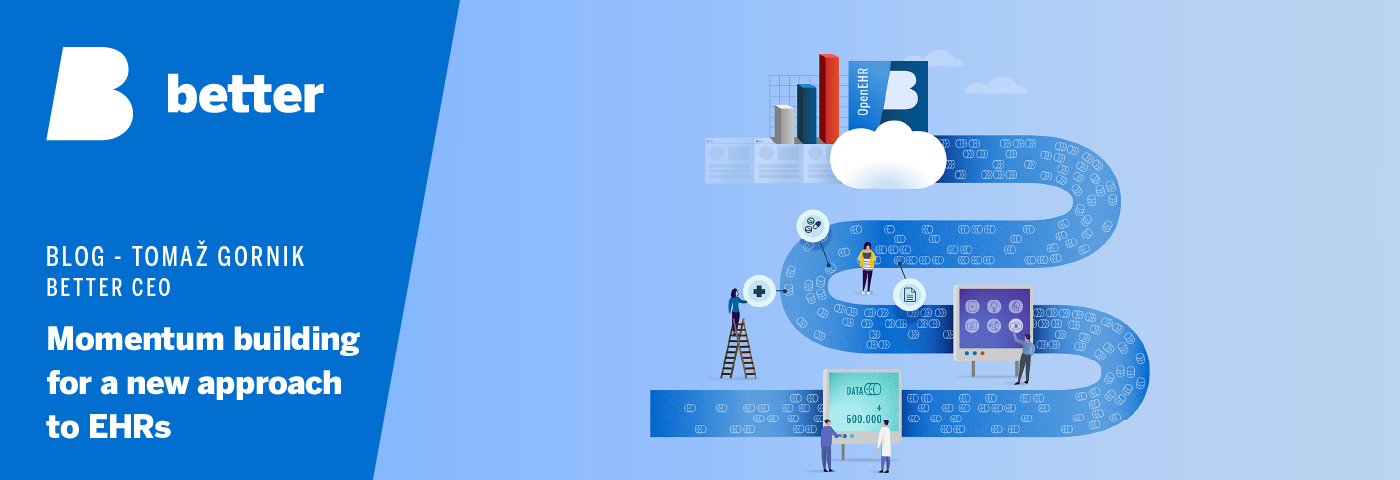ehealth
Momentum building for a new approach to EHRs
These extraordinary times due to the pandemic have shed new light on attempts to re-think the core architecture of health IT . A series of recent publications are actively proposing a complete overhaul of provider IT infrastructure including the workhorse of health IT - the EHR. For instance, HBR just published an article by John Glaser titled "It’s Time for a New Kind of Electronic Health Record” saying:"Imagine a plan-centric EHR ready to deal with Covid-19, incorporating the latest evidence-based treatments into each patient’s care plan based on their current status and underlying health conditions, and then feeding back data on how each patient responded in order to improve the plan for the next patient. Such capabilities could transform outcomes and save many lives."
Well, I cannot imagine an new EHR described above unless it is based on a fundamentally different approach. Future applications, apps and algorithms will be based on a vendor-neutral clinical data repository which provides a cradle-to-grave, longitudinal patient record and serves as a single source of truth. As long as data is tightly coupled with applications like in today’s leading EHRs, we will make only incremental improvements.
I have been writing about this approach since 2015, when I published several blogs about the Postmodern EHR, the enablers, the data layer, the feral systems dilema and application centric vs. data centric interoperability. Four years have passed, we are wiser for over 100 deployments of our vendor-neutral health data platform, and all the main arguments are still valid. What has changed is that we can now clearly see the shift in the market as the first organisations adopt the PostmodernEHR approach. Top consulting organisations like Gartner Group and EY, government organisations in the UK and Finland, top healthcare providers in the UK, France and Germany as well as important vendors in the Nordics are leading the way.
In just the last few weeks, both Gartner Group and EY published research which validates the concept of the data layer as a core component of the new architecture. In their series on the Digital Integration Hub, Gartner positions the data layer (data store plus metadata management) as a layer between legacy applications and the user experience. They also clearly urge organisations to “reject any new monolithic solutions, sold or proposed in-house”.
EY has come to the same conclusion, described in an excellent paper "How will you design information architecture to unlock the power of data?”: "As the focus of health systems moves toward supporting wellness — anytime, anywhere — an open platform environment is required to connect and share data, at scale, within and among enterprises and systems. The optimal platform will separate content and technology and will be vendor neutral, distributed and modular — incorporating third party as well as legacy systems.”
More importantly, government organisations like NHSX in the UK, UNA in Finland as well as MoH in Malta and Slovenia have explicitly stated support for a new approach. In February this year, NHSX published a Tech Plan for health and care stating “The Long Term Plan commits the NHS to having every provider digitised by 2024. This will mean Integrated systems that allow flexibility in managing clinical and operational workflows and patient data, built in a modular fashion according to open standards, avoiding vendor lock-in”.
Vendor-neutral, distributed and modular! This is exactly the approach led by the openEHR community, a non profit organisation which publishes open specifications and clinical data models. Based on these specifications, vendors build software systems which separate data from applications. The idea is to have choice at the application level to allow for competition and innovation, but governance at the data level to eliminate the need for integration and to prevent vendor-lock in. Some provider organisations in the UK, like NHS Sommerset Foundation Trust are fully aboard, already building their best of breed application strategy around a vendor-neutral data repository core defined by openEHR. Such repositories are also being deployed in France at IHU Strassbourg and at several large German University hospitals like Heidelberg and Charité Berlin.
Finally, as the market shifts, vendors are taking notice as well. All three largest Nordic vendors of EHR systems in Norway (DIPS), Sweden (Cambio) and Finland (TietoEvry) now use a vendor neutral data repository based on openEHR. These vendors are offering their customers great software as well as all data in an open format ensuring the customer full access to data with no blocking.
All of the above points to momentum building for a new approach to EHRs, one which separates data from applications. After all, we will be replacing applications every ten to fifteen years, but we need to keep data for the lifetime of a patient.
